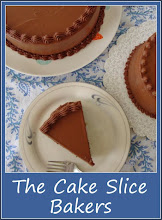After my Gluten Free Bread course, next day was Gluten Free
Pastry. Gluten free pastry is a tricky one to master. It’s got to be sturdy
enough to roll out and shape, and yet also be short and nicely crumbly once
cooked. If you add too many gums or starches to replace the gluten it holds
together and rolls our well, but then becomes tough and dense like cardboard
when baked – not so tasty. Equally if you don’t get the right mix of gums and
starches it becomes far too fragile and you end up with a pile of crumbs rather
than a crisp pastry base.
On the plus side however, as there is no gluten to overwork,
if your pastry falls apart when trying to line the tin then simply scoop it
back together and re-roll it without too many issues. One of the best tips I
know about how to easily roll out pastry is to roll it out between two sheets
of clingfilm. This not only stops it sticking to the work surface and requires
no extra flour, but also means you can use the base layer to help you lift and
flip the pastry into the tin. (We were shown this on the course but I have been
doing it myself for years).
On the course we learnt not only standard pastry, but also a
few different types of pastry! Flaky Shortcrust which we turned into an amazing
roast vegetable quiche for lunch
Pâte Sucrée with which we made delicious cherry
Bakewell tarts
Hot Water Crust Pastry for sturdier meat pies and sausage
rolls and even….Choux Pastry which we made into very cheesy Gougères!
The Choux and Hot Water Crust pastry were completely new to
me so I was very excited. I have previously attempted a gluten free choux
pastry and well… it was sort of a disaster so I was eager to see how it’s done.
I’ve made my own gluten free Shortcrust and Pâte Sucrée before, but the
techniques we were shown were new to me and produced fantastic results.
For the shortcrust pastry we were shown a very nifty
technique for achieving ultra smooth pastry with the butter and flour evenly
distributed in layers. It’s known as 'fraisering’.
You start by rubbing the butter into the flour as normal and then squishing it
into a rough log shape. Don’t kneed or over-handle it. You should still have a
few lumps of butter mixed in. You then take your log of pastry and, using a pallet
knife, cut off a slice about 5mm thick, almost to the base of the log. Then
tilt your pallet knife to 45 degrees and drag it towards you, smearing out the
pastry onto the work surface. Then carefully run your pallet knife back over it
three times, each time collecting a little more of the pastry while you draw it
towards yourself. (Almost like when making chocolate curls along the back of a block
of chocolate). This smoothes the flour and butter into layers. Then place your
smooth pastry piece to one side, cut another 5mm slice and repeat. At the end
gather your pastry together (don’t kneed it), place it in some cling film and
chill for 30 minutes before rolling it out between two large sheets of
clingfilm and lining your tin. Such a simple technique but it really does
produce the most smooth and evenly worked pastry. Plus you handle it very
little so it stays nicely cool and the butter doesn’t melt.
Here the technique is beautifully hand modeled her by my
friend Kizzy, who I met on the first day bread course and was back for the
second day too!
The Pâte Sucrée (French sweet pastry) also had
a very different technique. This was made almost like making fresh pasta. You
start by pouring your dry ingredients on the work surface and making a well in
the middle. Into this you add small cubes of butter and sugar, and squish them
into a paste using the very tips of your fingers. You then add some egg yolks
and again work them into the butter/sugar mix using your fingers until you end
up with rather a soft and sloppy mixture. You then switch to a pallet knife and
draw the flour into the butter mixture using a cutting and sweeping motion with
the blade of the pallet knife. Once it begins to form a dough, keep chopping it
with the blade and folding it back together with the knife almost like chopping
fresh herbs. It will be too soft to handle with your hands.
Scoop the dough into a mound, wrap in clingfilm and chill
before rolling out between two layers of clingfilm again. So clever! It
produced the most amazing pastry. Really light, buttery and perfectly short. It
held together beautifully but crumbled deliciously in the mouth.
Just look at the lovely little cherry Bakewell tarts we made
with it. I took one of mine home and fed it to my parents. They can both be quite
critical of gluten free food, but said they would never have known these were
gluten free – hurrah!
We were running a bit short on time so in the afternoon we
quickly made cheese gougères which are savoury
cheesy choux buns. You eat them as they are, no extra filling required, the astonishing
amount of cheese incorporated into the batter adding the flavour. When eaten
warm the cheese is wonderfully melty. Kizzy and I decided to also added a pinch
of paprika and chilli powder to ours for a bit of background heat. It also
explains why ours came out a little orange!
They were delicious and certainly very cheesy, although
sadly not as perfectly formed as we’d have liked as we ran out of time and had
to take them out the oven before they were fully cooked. The top tip for this
one is to let the batter cool before beating in the eggs to form the paste. (I
think this is where I went wrong when I attempted them previously) It’s hard
work beating in the eggs, you have to do it gradually and the mix is very thick
and stiff, so you need a friend to help you or else some strong arm muscles!
Overall I had a fantastic day, the food was delicious, the
company amazing and the techniques I learnt are invaluable. I can’t wait to try
some out myself at home. At the start of the courses I was most looking forward
to the bread day, but I think after doing both, the pastry has the edge on
knowledge, skills and overall deliciousness value for me. I would really really
recommend this pastry course to anyone struggling with gluten free pastry.
Note: As with the bread course, I attended this gluten free
pastry course of my own accord. I was not invited by Leiths to attend, I
received no discount on the fees and they never knew I write a food blog.


.jpg)
.jpg)
.jpg)
.jpg)
.jpg)
.jpg)
.jpg)
.jpg)
.jpg)






4 comments:
sounds like two great courses katie - I haven't tried gf bread but my mum has - but I have tried a few gf pastries and they are tricky so I am in admiration of your pastry - am sure you will be using all the tips used in your baking and your time and money invested in the course will be well worthwhile
This just tells me that I need to go on more courses!
What an interesting course Katie. The hot water crust and pate sucree are definitely recipes I would like to try. I look forward to seeing what amazing dishes you make with them!
Wow! Those are beautiful pastries and they sound delicious, too. I've always been impressed with your facility with gluten free baked goods...can't wait to see what you do with these techniques!
Post a Comment